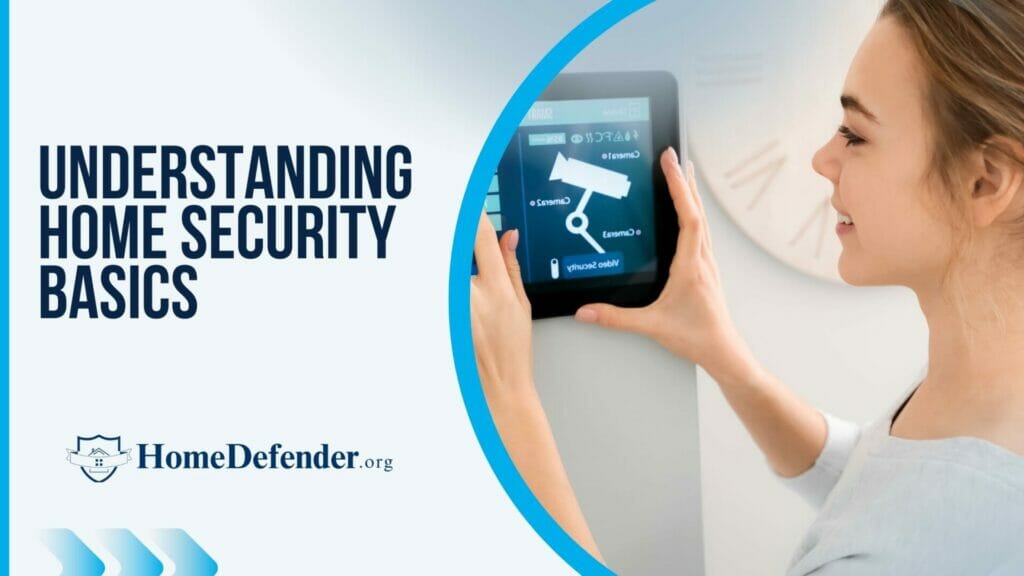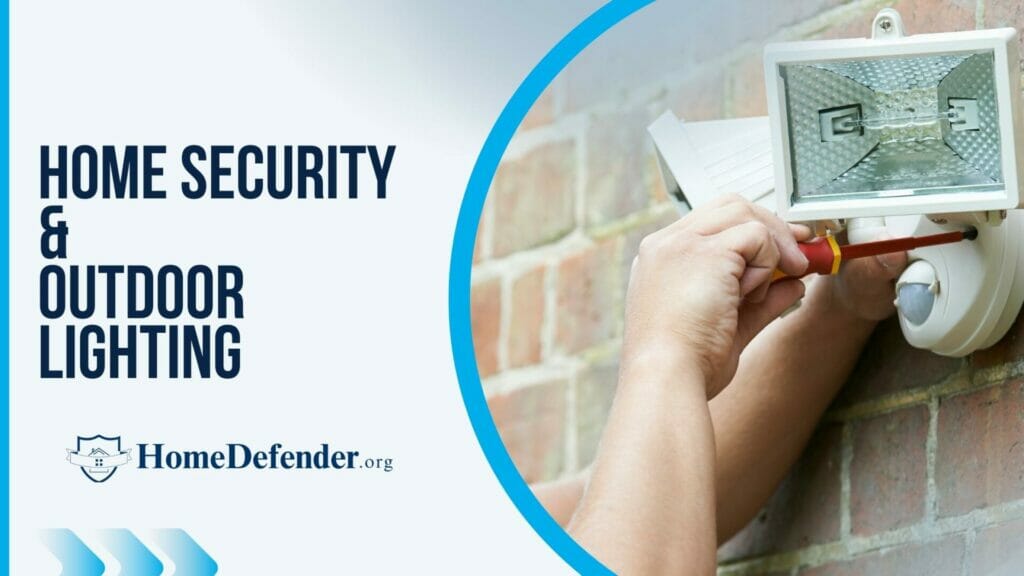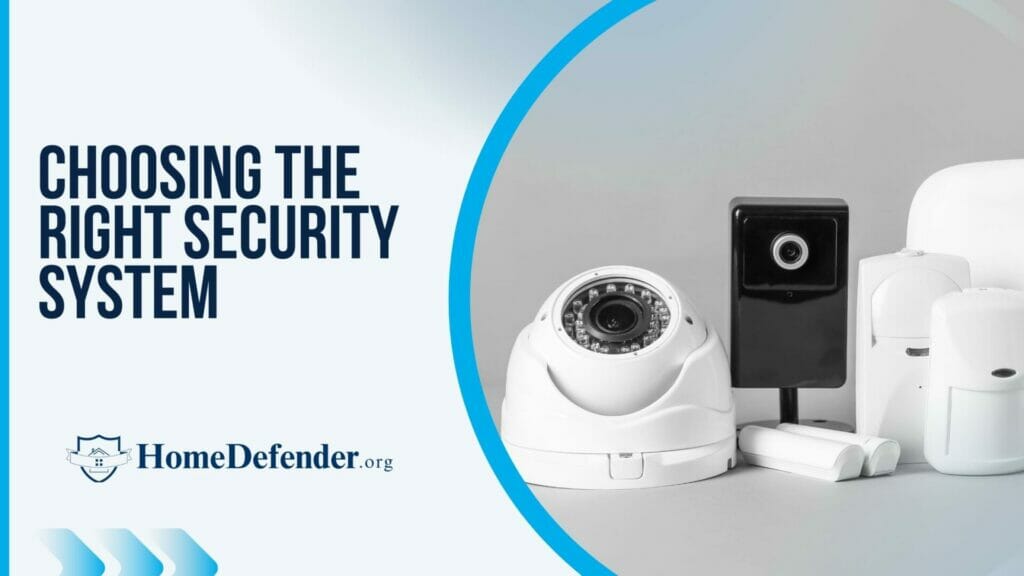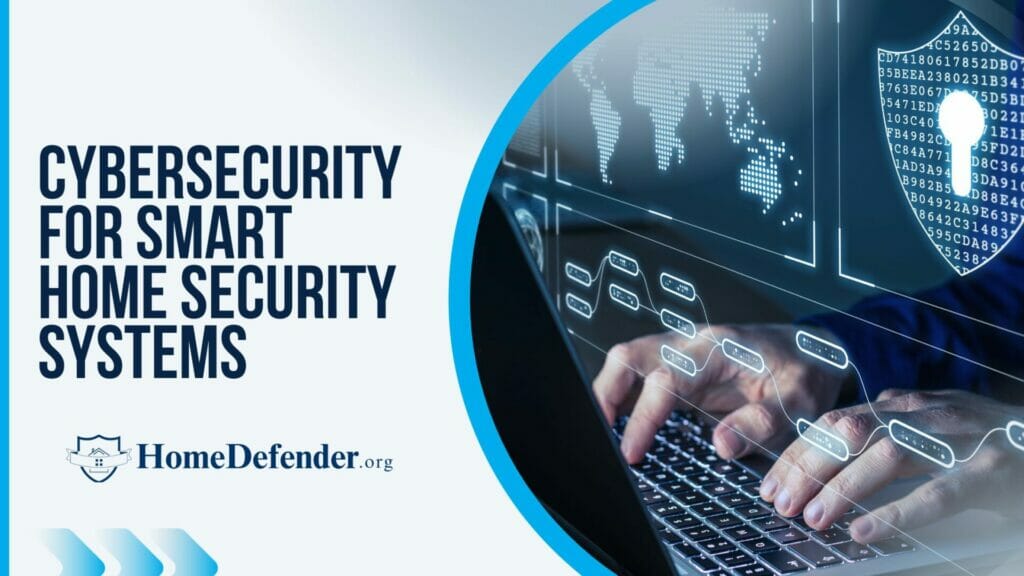As we get closer to 2024, the importance of home security cannot be overstated. According to a study by the FBI, there were an estimated 1,117,696 burglaries in the United States in 2019¹, emphasizing the need for robust home security measures. Whether it’s a suburban house in Texas or an apartment in bustling New York City, every home is a potential target. Investing in home security is no longer a luxury but a necessity.
This Home Security System Guide will equip you with all the necessary information to safeguard your home effectively in 2023. We’ll delve into the basics of home security, guide you through the process of choosing the right alarm systems, and explore the integration of smart home technology. We’ll also provide tips on maintaining your security system for optimal performance.
Remember, a well-secured home not only protects your family and possessions but also offers invaluable peace of mind. Let’s make your home a safe haven.
Key Takeaways
- Understand the fundamentals of today’s home security systems and implement key upgrades to doors, windows, and garages for enhanced safety.
- Choose the right security system by understanding the different types available and considering key features such as home automation compatibility, remote monitoring capabilities, and emergency response capabilities.
- Boost your home’s perimeter security with outdoor lighting, strategic landscaping, and strong fencing & gates.
- Integrate smart home technology with your security system for increased control, security, and real-time alerts.
- Secure your Wi-Fi network and follow best practices for device security to protect your smart home devices.
- Weigh the pros and cons of professional monitoring versus self-monitoring to choose the best fit for your lifestyle and budget.
- Regularly maintain your home security system by testing and updating equipment, replacing batteries, and staying informed about potential security risks.

Understanding Home Security Basics
A clear grasp of basic home security systems underpins any effective home security system. Home security is important for creating a safe and secure living environment, which includes securing doors, windows, and garages.
Significantly enhancing your home’s security and deterring burglars from attempting a break-in is achievable through the implementation of certain habits and key component upgrades.
Door Security
Door security holds high importance in home protection, and this includes front, back and sliding glass doors. Ensuring your door frames, hinges, and locks are strong can make a significant difference in preventing unauthorized entry. Inspect your exterior doors regularly for signs of weakness or damage, and replace door locks with high-quality ones when moving into a new residence.
Doorbell cameras are another excellent addition to door security. These cameras not only provide visual verification of who is at your front door but also allow you to communicate with visitors remotely. A robust barrier that deters potential intruders and ensures home security can be created by combining strong door frames, protected hinges, and doorbell cameras.
Window Security
Given that windows are an extremely common access point for burglars, securing them is a imporant aspect of home protection. Here are some effective window security measures you can employ:
Install aftermarket window locks
Use key-operated levers
Reinforce windows with security film or laminated glass
Use window bars or grilles
Keep windows locked when not in use
Install window sensors or motion sensors
Add window security pins
These measures can help prevent unauthorized access through windows, especially on the first floor. Effectively securing your windows and deterring potential intruders can be achieved by implementing these measures.
Garage Security
An often overlooked aspect of home security is garage security. Preventing unauthorized entry, especially if your garage is attached to your home, necessitates a locked and well-maintained garage door. Regularly inspect garage doors to ensure hinges and bolts remain tightly secured.
Consider a lock upgrade or an additional interior manual lock for use during extended absences to bolster security. Motion-activated lighting on both the exterior and interior of the garage can also provide an extra layer of deterrence after dark.
Lastly, don’t forget to lock the passageway door from the garage to your home’s interior and equip it with a deadbolt and security system sensors.

Enhancing Your Home’s Perimeter Security
Outdoor lighting, landscaping tips, and fencing and gates can significantly enhance your home’s perimeter security. These measures not only help to deter potential intruders but also improve the overall safety and aesthetics of your property.
Investing in these enhancements leads to a more secure living environment and the peace of mind that comes with a well-protected home, thanks to security companies.

Outdoor Lighting
Proper outdoor lighting plays a significant role in deterring criminals and preventing accidents by illuminating dark areas around your home. Some viable options for home security include:
Smart bulbs: These offer a range of features and are aesthetically pleasing.
Floodlights: These provide broad illumination.
Spotlights: These are effective for highlighting certain areas.
Installing outdoor security lights with cameras can offer increased surveillance and help in identifying potential intruders. These systems can be integrated with your home security system, providing real-time alerts and recordings of any suspicious activity.
Landscaping Tips
Landscaping can also play an important role in home security. Here are some ways to improve your home security through landscaping:
Remove potential hiding places
Use smaller plants
Reinforce windows near trees
Trim shrubs and trees
Remove tall grass
Clear away debris or clutter from your yard
These measures can help deter burglars and improve overall security.
Using smaller plants and low-growing trees can reduce the likelihood of providing concealment for potential intruders. Additionally, reinforcing windows near trees with window guards, security film, or other reinforcement techniques can help decrease the likelihood of unauthorized access to your property.
Fencing and Gates
Fencing and gates can provide an additional layer of security by creating a physical barrier around your property. Some viable options for home security include:
Steel palisade fences
Welded wire steel fences
Ornamental wrought iron fences
Chain link fences
Wire mesh fencing
Locking your fenced-in yard can also discourage burglars from using it to conceal their activities. By investing in strong fencing and gates, you can create a secure perimeter that deters potential intruders and adds an extra level of protection for your home and family.
See our guide on backyard security to protect your home!

Home Security Systems
Selecting the ideal security system for your home involves understanding the different types of systems available and the key features to consider for your specific needs. Using a security system finder can help you navigate through the options, from DIY to professionally installed systems, monitoring options, and home automation compatibility. This will ensure you choose a home security system that protects your home and family.
Types of Security Systems
Security systems come in various forms, including DIY, professionally installed, monitored, and unmonitored systems. DIY home security systems have become increasingly popular due to their convenience and affordability. These systems typically include components like motion sensors, door and window sensors, and security cameras.
Professionally installed systems by security system companies offer the advantage of expert installation and often come with discounts on equipment due to multiyear contracts. However, they usually involve higher monthly monitoring fees and long-term commitments.
See our guide on professional vs. DIY home security system installation
Monitored systems provide 24/7 coverage by trained professionals, while unmonitored systems rely on the homeowner to keep an eye on their security system and respond to alerts themselves.
Key Features to Consider When Choosing A Security System
Selecting a security system requires consideration of key features such as home automation compatibility, remote monitoring capabilities, and emergency response capabilities. Home automation allows you to integrate your security system with other smart devices such as lights, locks, and thermostats, providing remote control and automation of certain tasks.
Remote monitoring capabilities offer the following benefits:
Keep an eye on your security system from any location using a smartphone or other device
Stay informed about your home’s status
Be notified of any unusual activity
Emergency response capabilities enable you to quickly contact emergency services in the event of an alarm activation, ensuring rapid assistance when needed.
See our guide on home security features you should keep an eye out for

Smart Home Security Integration
Integrating smart home security with your existing home automation system can offer numerous benefits, including increased security, remote control capabilities, and real-time alerts for lights, locks, cameras, and alarms. By understanding the components home security systems offer, you can make an informed decision on the best setup for your needs.
Maximizing the effectiveness of your home security system requires an understanding of the benefits of home automation and ensuring device compatibility.
Home Automation Benefits
Home automation offers a range of benefits that can enhance your home security system. These benefits include:
Improved security and safety
Convenience
Control
Energy efficiency
Enhanced comfort
By integrating your smart security system with other smart devices, you can control and monitor your home from a single location, offering user-friendly controls and peace of mind.
Remote control capabilities with home automation offer convenience and peace of mind by allowing you to control your home’s:
Lights
Locks
Cameras
Alarms
From any location, real-time alerts can also provide notifications when something occurs in the home, such as when lights, locks, cameras, and the alarm system are activated, offering an additional layer of security.
See our article on the best smart home security systems.
Compatible Devices
Compatibility with various smart devices is an important aspect of smart home security integration. Examples of compatible devices include:
Security cameras
Doorbell cameras
Smart locks
Environmental sensors
These devices can be integrated with your home security system, providing real-time monitoring and control capabilities.
When selecting a security system that is highly compatible with other smart technology in your home, you minimize issues associated with the system and its components. By investing in a system that seamlessly integrates with your existing devices, you can maximize the effectiveness of your home security efforts and enjoy the added convenience and peace of mind that smart home technology provides.

Cybersecurity for Smart Home Security Systems
As more homes adopt smart security systems, cybersecurity becomes increasingly important. Ensuring the security of your Wi-Fi network and following best practices for device security can help protect your personal and financial information, as well as prevent unauthorized access to your smart home devices.
Securing Your Wi-Fi Network
To protect your personal and financial information and keep your smart home devices safe from unauthorized access, securing your Wi-Fi network is imperative. Implementing strong passwords, encryption, and disabling remote access are all effective methods for securing your Wi-Fi network.
Regularly monitoring and troubleshooting your Wi-Fi network can help you identify and address potential security threats. Using a network monitoring tool and staying up-to-date with software updates can help ensure the security of your network and prevent unauthorized access to your smart home devices.
Device Security Best Practices
Following best practices for device security can help protect your smart home devices and ensure the overall security of your home. Using strong passwords, updating software regularly, and enabling multi-factor authentication can all help safeguard your devices from unauthorized access.
A strong password should be a minimum of 8 characters and incorporate a combination of upper and lower case letters, numerals, and special characters. This helps to ensure that your devices remain secure and less susceptible to unauthorized access.
Additionally, regularly updating your device’s software helps to ensure that your devices are protected against the latest potential threats. Staying informed about potential security risks and implementing best practices for device security can help minimize the likelihood of unauthorized access and keep your smart home devices secure.

Cost Considerations
Various cost considerations should be taken into account when investing in a home security system. These can include:
Equipment costs
Installation fees
Monitoring and storage fees
Activation fees
Additionally, some home security systems may offer discounts on homeowners insurance, providing further savings.
Equipment costs can vary depending on the type of system, features, and components included. Monitoring fees for professionally monitored systems typically range from $20 to $60 per month, while DIY systems may offer lower monitoring fees or even free self-monitoring options. Installation fees can range from minimal or free for DIY systems to up to $1,000 for professionally installed systems.
Factoring in these costs is imporant when choosing a home security system that aligns with your budget and needs. By understanding the various costs involved, you can make an informed decision and invest in a system that provides the best protection for your home and family.
Professional Monitoring vs. Self-Monitoring Security Alarms
When it comes to monitoring your home security system, there are two primary options: professional monitoring and self-monitoring. Professional monitoring provides 24/7 security coverage, ensuring that alerts are addressed promptly, even when you are unavailable. This can offer peace of mind, knowing that trained professionals are constantly watching over your home.
Self-monitoring, on the other hand, allows for more control and flexibility but requires more personal involvement in managing your home security. With self-monitoring, you are responsible for monitoring your system, responding to alerts, and contacting emergency services when necessary. This option can be more cost-effective and may be preferable for those who want greater control over their home security.
The choice between professional monitoring and self-monitoring home security systems will depend on your personal preferences, lifestyle, and budget. Both options have their benefits and drawbacks, and it’s important to weigh them carefully when deciding on the best monitoring solution for your home security system.
Tips for Maintaining Your Home Security System
For continued effectiveness of your home security system and the protection of your home and family, maintaining the system is paramount. Regularly testing and updating equipment, replacing batteries, and staying informed about potential security risks can help keep your system functioning optimally and provide peace of mind.
To ensure your system is functioning properly, regularly test and update your equipment, including cameras, motion sensors, glass break sensors, and environmental sensors. Replace batteries as needed to ensure your devices have a consistent power supply and can detect any potential security risks.
In addition to maintaining your equipment, staying informed about potential security risks and best practices can help you take proactive measures to safeguard your home. By regularly updating your knowledge and implementing best practices, you can ensure the continued effectiveness of your home security system and protect your home and family from potential threats.
Home Security Guide Summary
In wrapping up, it’s clear that home security in 2023 is a multi-faceted concept that requires a comprehensive understanding of various aspects.
It’s imporant to grasp the fundamentals of home security. This includes the importance of enhancing door, window, and garage security. For instance, strengthening door frames, installing doorbell cameras, using aftermarket window locks, and maintaining a well-secured garage door are all effective measures.
selecting the right security system is key. This involves understanding the different types of systems available, such as DIY, professionally installed, monitored, and unmonitored systems, and considering important features such as home automation compatibility and remote monitoring capabilities.
Integrating smart home technology with your security system can offer increased control, security, and real-time alerts. For example, by linking your security system with smart lights, locks, and thermostats, you can remotely control and automate certain tasks.
Make sure your smart home security systems have high cybersecurity. This involves securing your Wi-Fi network and following best practices for device security to prevent unauthorized access to your smart home devices.
Cost considerations are another important factor. These can range from equipment costs and installation fees to a monitored security system and storage fees, and even activation fees.
Monitoring your home security system can be done through professional monitoring for 24/7 security coverage or self-monitoring for more control and flexibility.
Finally, regular maintenance of your home security system is paramount for its continued effectiveness. This includes regularly testing and updating equipment, replacing batteries, and staying informed about potential security risks.
By following these home security tips and guidelines, you can make informed decisions and invest in a system that provides the best protection for your home and family.
What security should I have for my house?
Having an alarm system and window/lawn sign is essential to deterring burglars and ensuring your home security – homes with these measures are 300% less likely to be broken into.
What is the #1 rated home security?
After comparing the best home security systems, it is clear that the #1 rated home security system is SimpliSafe.
What are the benefits of integrating smart home technology with my home security system?
Integrating smart home technology with your home security system provides increased security, remote control capabilities, and real-time alerts for lights, locks, cameras, and alarms, making it easier to protect your home.
How can I secure my Wi-Fi network to protect my smart home devices?
To protect your smart home devices, make sure to use strong passwords, encryption, and disable remote access for your Wi-Fi network.
See our tips on can a security system be hacked?
What is the difference between professional monitoring and self-monitoring?
Professional monitoring offers the benefit of 24/7 security coverage by trained professionals, while self-monitoring allows homeowners to take more control over their home security but requires more involvement.
Citations
- Federal Bureau of Investigation. (2019). Crime in the United States, 2019: Burglary. Retrieved from https://ucr.fbi.gov/crime-in-the-u.s/2019/crime-in-the-u.s.-2019/topic-pages/burglary


![The Ultimate Home Security System Guide [2023]](https://homedefender.org/wp-content/uploads/2023/09/The-Comprehensive-Home-Security-Guide-1.jpg)
